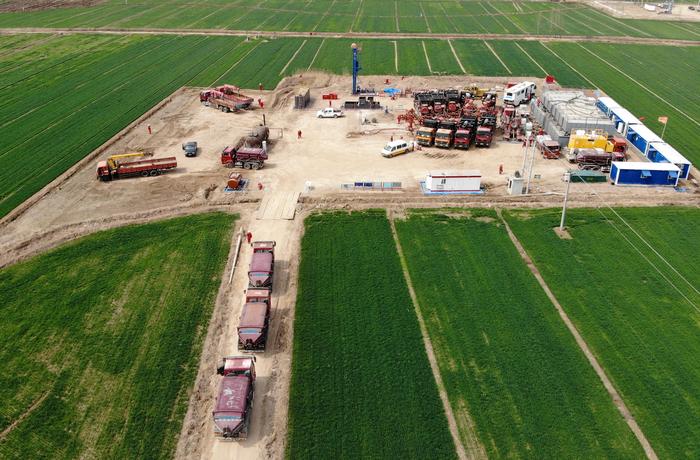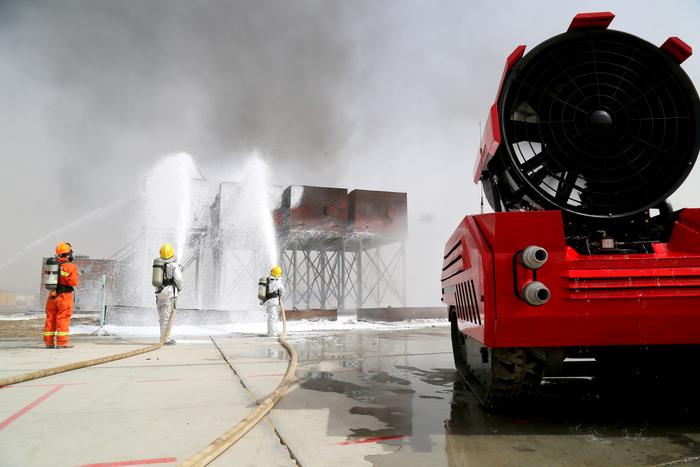|
| 2020-04-27 来源: 中国石化新闻网 |
| 石化新闻 |
中国石化新闻网讯 据路透社4月26日报道,4月20日,美国原油期货CLc1的基准价格暴跌至-38美元/桶,令能源行业损失超乎想象。而CLc1在其近40年的历史中从未跌破10美元/桶。 在短短几个月的时间里,燃料需求暴跌,美国大量原油无处储藏。 尽管油价下跌这种不寻常的情况可能不会重演,但许多业内人士表示,这预示着未来的前景可能更加暗淡,多年的过度投资也不会在几周甚至几个月的时间内得到扭转。 美国独立石油协会(Independent Petroleum Association of America)负责经济和国际事务的副总裁弗雷德里克?劳伦斯(Frederick Lawrence)表示:“前几天期货合约的情况表明,情况开始恶化的时间比预期的要早。” 市场正在迫使所有生产商采取行动,世界各地都出现了企业停产。欧佩克及其盟友此前已承诺将每天减产1000万桶,但协议尚未完全生效,且这一承诺不足以阻止油价跌至负值。 沙特阿拉伯曾表示,正在和其他欧佩克成员国准备采取进一步措施,但还没有做出新的承诺。不过,即使欧佩克完全停止生产,石油供应仍可能超过需求。 美国已宣布每天减产逾60万桶,加拿大也宣布每天减产30万桶。巴西国家石油公司已将日产量削减了20万桶。 阿塞拜疆是欧佩克+成员国之一,正迫使一个以英国石油公司为首的组织首次实行减产措施——这些国家的石油巨头通常被排除在政府强制减产的范围之外。一名阿塞拜疆高级官员对路透社表示:“自从1994年签署了世纪合同以来,从未减产过。” 在世界没有足够空间储存石油的情况下,这种妥协是不可避免的。能源研究员表示,截至周四,全球陆上石油储量约85%已经饱和。 国际能源署(IEA)估计,4月份石油日需求量将减少2900万桶。预计5月石油消费量将有所回升,但研究人员警告称,预计日需求量仅较上年同期减少1200万桶的估计可能过于乐观。 王佳晶 摘译自 路透社 原文如下: When oil became waste: a week of turmoil for crude, and more pain to come The magnitude of how damaged the energy industry is came into full view on April 20 when the benchmark price of U.S. oil futures CLc1, which had never dropped below $10 a barrel in its nearly 40-year history, plunged to a previously unthinkable minus $38 a barrel. In just a few months, the coronavirus pandemic has destroyed so much fuel demand as billions of people curtail travel that it has done what financial crashes, recessions and wars had failed to ever do - leave the United States with so much oil there was nowhere to put it. While the unusual circumstance of negative oil prices may not be repeated, many in the industry say it is a harbinger for more bleak days ahead, and that years of overinvestment will not correct in a period of weeks or even months. “What happened in the futures contract the other day indicated things are starting to get bad earlier than expected,” said Frederick Lawrence, vice president of economics and international affairs at the Independent Petroleum Association of America. The market is forcing the hands of all producers. Across the world, governments and companies are preparing to shut down output, and many have already begun. The Organization of the Petroleum Exporting Countries and its allies had already committed to record cuts of 10 million barrels of daily supply that have yet to take full effect. That commitment was not enough to prevent oil’s fall below zero. Saudi Arabia has said it and other OPEC members are prepared to take further measures, but made no new commitments. It is a measure of the depth of demand destruction that even if OPEC stopped producing altogether, supply may still exceed demand. More than 600,000 barrels per day in production cuts have already been announced in the United States, along with another 300,000 bpd of shut-ins in Canada. Brazil’s state-run Petrobras (PETR4.SA) has reduced output by 200,000 bpd. Azerbaijan, part of the group of nations known as OPEC+, is forcing a BP-led group to cut output for the first time ever. Oil majors in those countries have generally been excluded from government-imposed cuts. “We have never done it before since they came to the country in 1994 and signed the contract of the century,” a senior Azeri official told Reuters. That accommodation can no longer be made with the world running out of space to put oil. As of Thursday, energy researcher Kpler said onshore storage worldwide is now roughly 85% full. Demand is expected to fall by 29 million bpd in April, the International Energy Agency estimated. Paris-based IEA expects consumption to pick up in May, but researchers cautioned that its expectation of a mere 12 million bpd fall in year-over-year demand may be too optimistic. |








